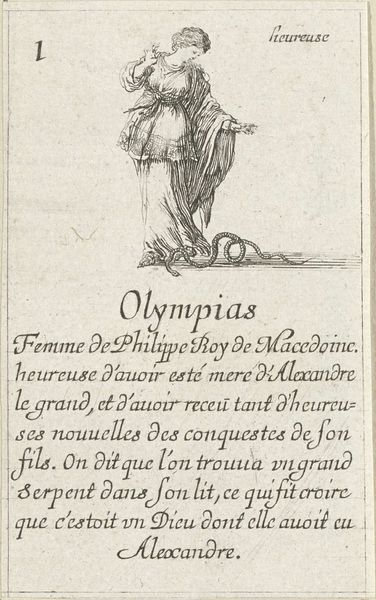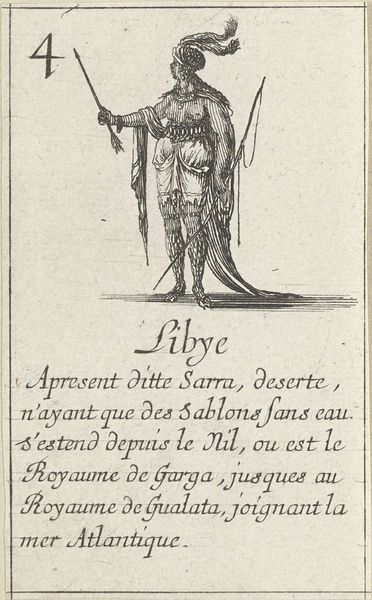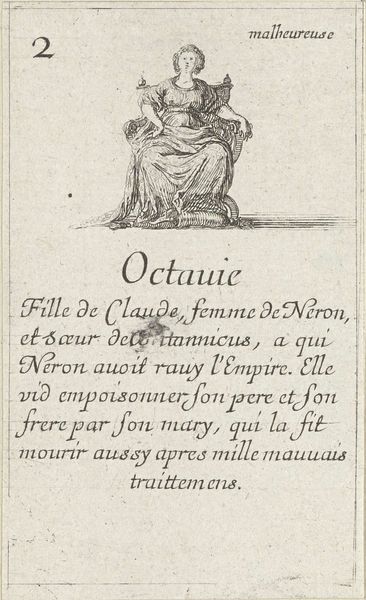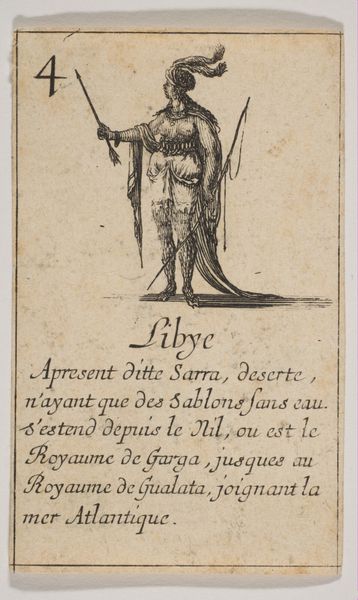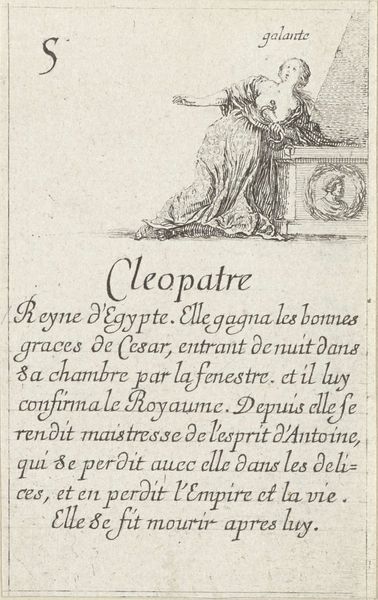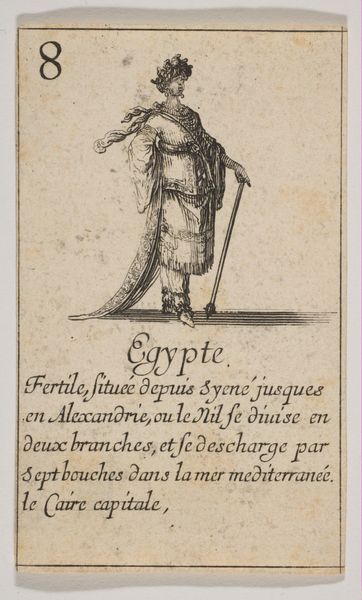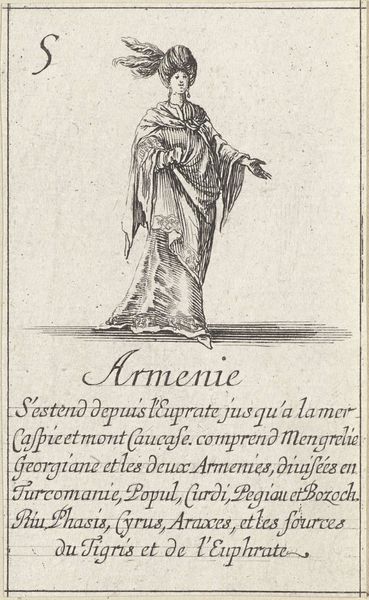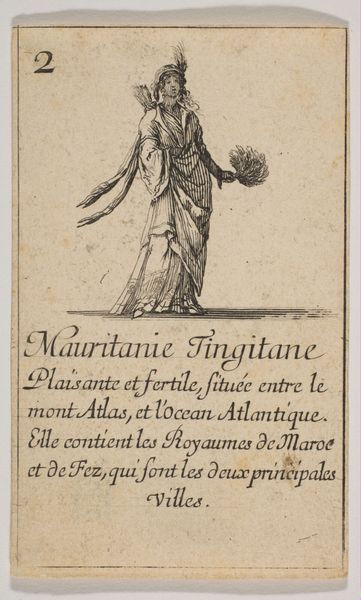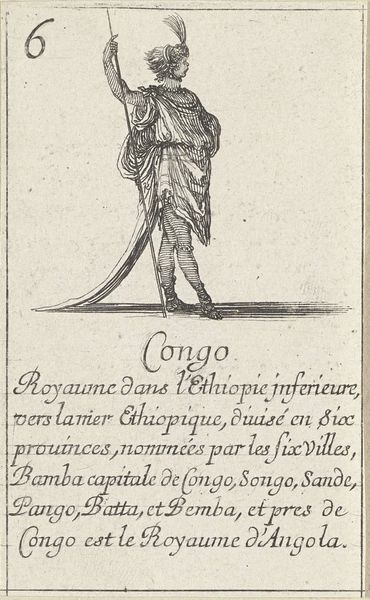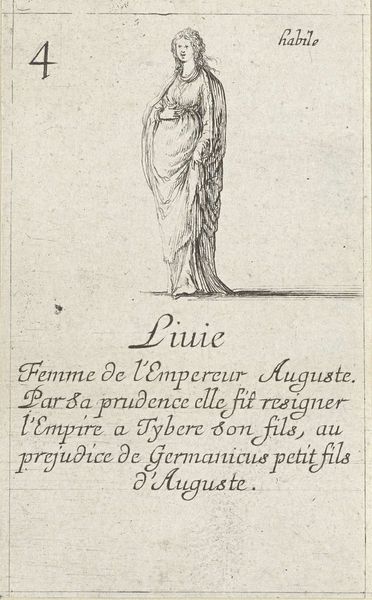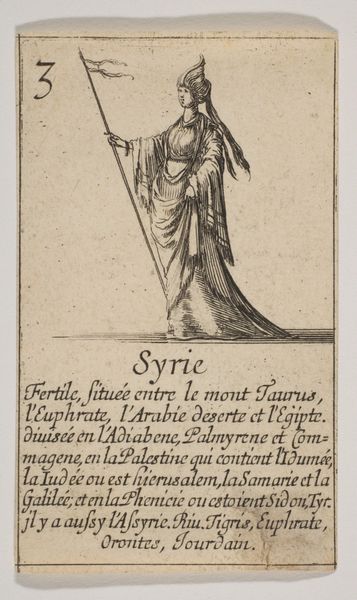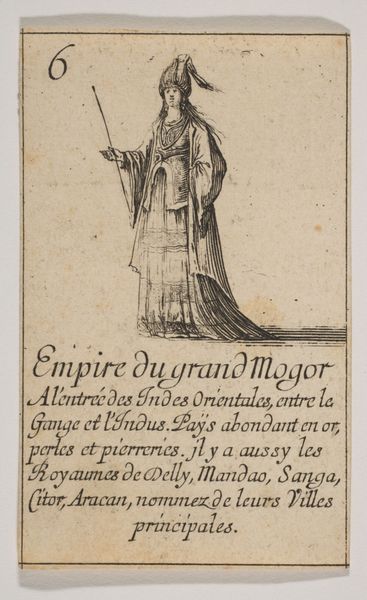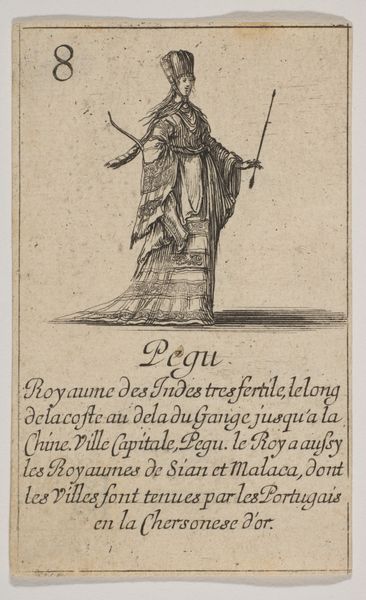
print, etching, engraving
#
portrait
#
baroque
# print
#
etching
#
figuration
#
history-painting
#
engraving
Dimensions: height 90 mm, width 55 mm
Copyright: Rijks Museum: Open Domain
Curator: Looking at this etching, I'm immediately struck by Clytaemnestra's chilling stillness. There’s a severity to her that the delicate lines only amplify. Editor: Indeed. This is "Clytaemnestra" by Stefano della Bella, dating to somewhere between 1620 and 1664. As a print, specifically an etching, its historical and social contexts open avenues for understanding how powerful women were perceived and portrayed in the baroque era. What readings can be brought when we consider that this image appeared alongside stories of powerful men? Curator: It’s fascinating to consider what role that medium, print, may have played in circulating images and narratives of powerful women like Clytaemnestra. The very act of etching and reprinting makes her almost eternally present. We can unpack this portrayal of the queen not as a simple retelling of mythology but a commentary on agency and the transgressions women face when usurping male authority. Is she empowered or doomed, and how much does that determination rely on where she is, when she is, who surrounds her, and how we perceive her choices? Editor: Context is crucial. Think about the staging of power, right? The Rijksmuseum, where it resides now, for instance, lends another layer to its narrative. It underscores Clytaemnestra's place within a lineage of art and history displayed, framed, and studied by the public. She becomes an icon of baroque anxieties around gender and power. Curator: Precisely. Her story, even in its "cruelle" iteration as the etching title suggests, reflects a broader anxiety about female agency in early modern Europe. I am curious, who was Bella thinking about? It’s important to recognize the power dynamics at play and question if Bella was taking liberty in demonizing her to suit socio-cultural expectations. We also need to consider this representation within a discourse where art often serves to either challenge or reinforce the social order. Editor: So true, the visual and textual pairing gives the piece an undeniable propagandistic slant! And in light of your activist perspective, how would you summarize the value of studying artworks like this today? Curator: Works like this offer a crucial entry point for discussing intersectional themes in history, and that understanding gives tools and skills in the present day. By critically examining such pieces, we confront persistent stereotypes and power dynamics that continue to shape contemporary discussions of gender, violence, and justice. Editor: And that awareness underscores art's ever-relevant, ongoing political role.
Comments
No comments
Be the first to comment and join the conversation on the ultimate creative platform.
